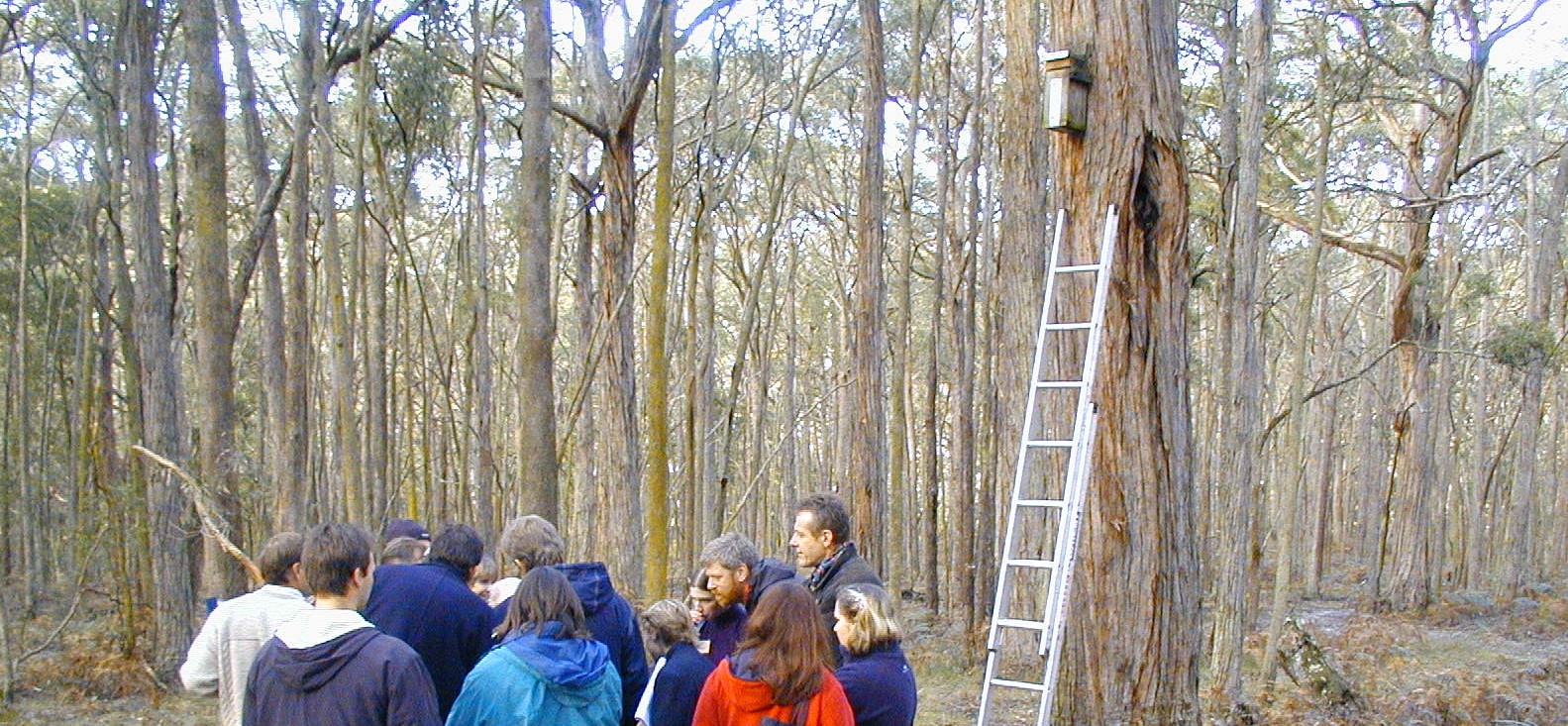Nestboxes in your neighbourhood

Many of Australia’s unique birds and mammals rely on hollows in old trees for sheltering and rearing their young. You can supplement the shortage of naturally occurring hollows by providing a nestbox suited to the wildlife of your local area.
This booklet is a guide to nestbox construction, maintenance, monitoring and use for a large variety of animals.
If you intend hanging a nestbox, select a design which is suited to the wildlife in your area and maintain it carefully.
- This small box is highly recommended. Even in urban areas you are quite likely to attract one of the several local species of microbats
Feathertail Gliders (pdf, 69kb)
- Ideal small box for peri-urban or rural areas where Feathertail Gliders are known, or suspected to live
Because of their large size, the following boxes are best constructed from marine ply.
- Suitable for Brushtail Possums. Quite likely to be successful in an urban environment and may provide a good alternative to the shed roof
- Suitable for Red-Rumped Parrot, White-Throated Treecreeper, Brown Treecreeper and Owlet Nightjar
- These species tend not to come deep into urban areas but a box hung in a peri-urban or rural setting may provide a successful nesting site
- Suitable for Rosellas – Crimson, Yellow, Adelaide, Green, Western, Eastern, Pale-headed, Common Ringtail Possum, Sugar Glider, Tuan/Brush-tailed Phascogale
- This is a very large box and should only be hung using specialist equipment
For information on study options focused on wildlife and the environment consider: